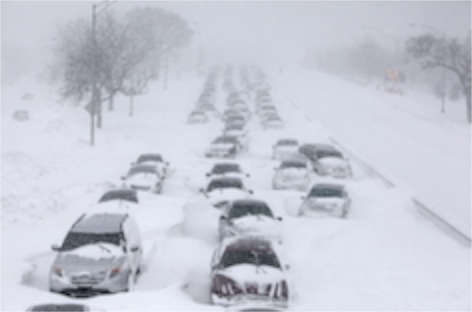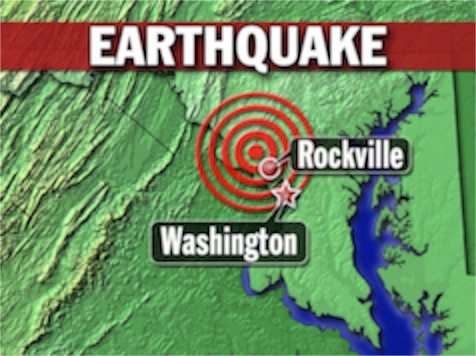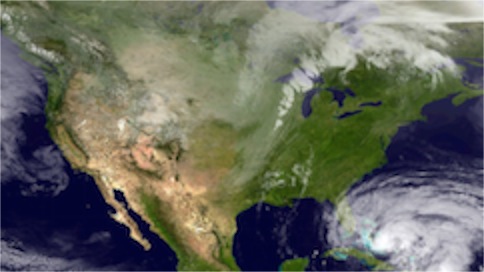The weather in Washington DC
27/10/12 05:28
I’ve lived most of my life in places that have a reputation for bad weather. Most people in Montana know that the wind blows a lot in Big Timber. When I went to college a mere 80 miles downwind people would ask me how I could stand to live in such a windy place. They would say things that led me to believe that they would never want to live in a place that had such high winds.
 Then I moved to Chicago, another city known for its high winds. The winds can blow cold in Chicago, but generally they blow out toward the lake and not in from the lake. Since I had grown up in a place where it can get -30 F in the winter, Chicago didn’t seem that bad to me. However, it was a bit of a surprise that the folks at home seemed to want to talk about how bad the weather in Chicago was. We did have one blizzard when we lived in Chicago that pretty much shut down the city. Being a kid from Montana, I had tire chains and was able to go wherever I wanted, but I did have to maneuver around hundreds of cars that had been abandoned on the highways and city streets.
Then I moved to Chicago, another city known for its high winds. The winds can blow cold in Chicago, but generally they blow out toward the lake and not in from the lake. Since I had grown up in a place where it can get -30 F in the winter, Chicago didn’t seem that bad to me. However, it was a bit of a surprise that the folks at home seemed to want to talk about how bad the weather in Chicago was. We did have one blizzard when we lived in Chicago that pretty much shut down the city. Being a kid from Montana, I had tire chains and was able to go wherever I wanted, but I did have to maneuver around hundreds of cars that had been abandoned on the highways and city streets.
It was amusing to me that when I moved from Chicago to North Dakota my Chicago friends couldn’t figure out why anyone would want to move to North Dakota. They made snide remarks about the low population, but they also made a lot of comments about the weather. They would say things like, “How could you stand the cold winters in North Dakota?” When we got to North Dakota, people would ask, “How could you stand the cold winters in Chicago?”
Then we moved to Boise. The main thing you can say about the weather in Boise is that there isn’t much of it. The city averages 360 sunny days each year. A couple of snowfalls and a rainy day or two and that is it. The winds are so light that I missed the sound of the wind. When we did get a thundershower, it was really small in comparison to what happens on the plains. The trees in our yard were so wimpy that they would lose branches if we got a wind gust over 20 mph.
And now I live in the banana belt of South Dakota. The weather is almost always a bit milder here in Rapid City than in other places in the plains. Our temperatures are not as hot in the summer or as cold in the winter as the eastern part of the state. We get a few storms and then the weather clears up. Our most severe blizzards occur in the spring. It’ll snow for a few days and then the sun will come out and melt everything off. We don’t have much to complain about.
I don’t pay too much attention to the weather in other parts of the country. I do notice the conditions in the places where I have friends. Since our daughter married into a family whose home is in Virginia, I have paid more attention to the weather in our nation’s capital. I’m beginning to think that the candidates for the House and Senate and White House aren’t really paying attention to the weather in Washington, DC. If they did, they might think about getting jobs in other places. Since the summer of 2010, when our daughter was married and I started paying attention, a lot of big storms have descended on her in-laws.
 The winter before the wedding brought a lot of snow to the Washington DC area. President Obama called the February 5 – 6 blizzard Snowmageddon. Others called it Snowpocalypse. 32 inches fell at Dulles Airport, shattering previous records. Both George Washington and Thomas Jefferson recorded a three-foot snowfall in 1772, but the official records don’t show any bigger snowfall in Washington, D.C. Four days later another 12 to 18 inches of snow fell on the city. They called it Snowverkill.
The winter before the wedding brought a lot of snow to the Washington DC area. President Obama called the February 5 – 6 blizzard Snowmageddon. Others called it Snowpocalypse. 32 inches fell at Dulles Airport, shattering previous records. Both George Washington and Thomas Jefferson recorded a three-foot snowfall in 1772, but the official records don’t show any bigger snowfall in Washington, D.C. Four days later another 12 to 18 inches of snow fell on the city. They called it Snowverkill.
A blizzard shut down the evening commute on January 26, 2011. Some commuters found that their normal trip was stretched to six hours or more and when they got home the power was out because of the branches that fell on power lines across the city.
 On August 23, 2011 an earthquake shook the area. Pieces of the National Cathedral crumbled. The Washington Monument has been closed to visitors ever since. The quake measured 5.6 on the Richter scale and was the largest in more than 100 years.
On August 23, 2011 an earthquake shook the area. Pieces of the National Cathedral crumbled. The Washington Monument has been closed to visitors ever since. The quake measured 5.6 on the Richter scale and was the largest in more than 100 years.
Five days later Hurricane Irene swept upon the capital, drenching everything in sight. The power was out from Virginia to North Carolina. I guess the brunt of the storm was in other places than the capital, but our family in DC had to brace for the storm and we were concerned.
On June 29, 2012 one of the most destructive complexes of thunderstorms in memory swept through the area. Packing wind gusts of 60 – 80 mph, the storm downed hundreds of trees and left more than a million people without power during the next few days when daytime highs exceeded 100 degrees. People had to empty their refrigerators and freezers and endure life without air conditioning as they waited for the power to be restored.
 Now they are telling people in our capital to prepare for the approach of Hurricane Sandy which is expected to run into a storm moving in from the west and arctic air coming down from Canada. They are calling it “Frankenstorm.” Sandy has been a destructive storm in the Caribbean, where dozens have been killed. There are plenty of people who can remember back to the fall of 2003 when Hurricane Isabel crashed into the area with storm surges, rainfall and runoff flooding homes and businesses. People got out their canoes and kayaks to paddle through sections of Alexandria, Virginia in those days.
Now they are telling people in our capital to prepare for the approach of Hurricane Sandy which is expected to run into a storm moving in from the west and arctic air coming down from Canada. They are calling it “Frankenstorm.” Sandy has been a destructive storm in the Caribbean, where dozens have been killed. There are plenty of people who can remember back to the fall of 2003 when Hurricane Isabel crashed into the area with storm surges, rainfall and runoff flooding homes and businesses. People got out their canoes and kayaks to paddle through sections of Alexandria, Virginia in those days.
So I guess the folks in the nation’s capital need to stock the pantry shelves, check the storm kit and brace themselves for some nasty weather. It makes you wonder why candidates are willing to spend millions of dollars to try to get a job and a house in a place where the weather is so bad.
Back in the winter of 1945-46, delegates from around the world gathered in London to create the United Nations. Rapid City promoter Paul Bellamy proposed a location in the Imperial Valley, just south of Rapid City near the Stratobowl. He said that the delegates would think clearer out in the Black Hills. The natives have known for generations that people think more clearly in the hills.
Makes you wonder how different it might be if the nation’s capital were located in a place with better weather.

It was amusing to me that when I moved from Chicago to North Dakota my Chicago friends couldn’t figure out why anyone would want to move to North Dakota. They made snide remarks about the low population, but they also made a lot of comments about the weather. They would say things like, “How could you stand the cold winters in North Dakota?” When we got to North Dakota, people would ask, “How could you stand the cold winters in Chicago?”
Then we moved to Boise. The main thing you can say about the weather in Boise is that there isn’t much of it. The city averages 360 sunny days each year. A couple of snowfalls and a rainy day or two and that is it. The winds are so light that I missed the sound of the wind. When we did get a thundershower, it was really small in comparison to what happens on the plains. The trees in our yard were so wimpy that they would lose branches if we got a wind gust over 20 mph.
And now I live in the banana belt of South Dakota. The weather is almost always a bit milder here in Rapid City than in other places in the plains. Our temperatures are not as hot in the summer or as cold in the winter as the eastern part of the state. We get a few storms and then the weather clears up. Our most severe blizzards occur in the spring. It’ll snow for a few days and then the sun will come out and melt everything off. We don’t have much to complain about.
I don’t pay too much attention to the weather in other parts of the country. I do notice the conditions in the places where I have friends. Since our daughter married into a family whose home is in Virginia, I have paid more attention to the weather in our nation’s capital. I’m beginning to think that the candidates for the House and Senate and White House aren’t really paying attention to the weather in Washington, DC. If they did, they might think about getting jobs in other places. Since the summer of 2010, when our daughter was married and I started paying attention, a lot of big storms have descended on her in-laws.

A blizzard shut down the evening commute on January 26, 2011. Some commuters found that their normal trip was stretched to six hours or more and when they got home the power was out because of the branches that fell on power lines across the city.

Five days later Hurricane Irene swept upon the capital, drenching everything in sight. The power was out from Virginia to North Carolina. I guess the brunt of the storm was in other places than the capital, but our family in DC had to brace for the storm and we were concerned.
On June 29, 2012 one of the most destructive complexes of thunderstorms in memory swept through the area. Packing wind gusts of 60 – 80 mph, the storm downed hundreds of trees and left more than a million people without power during the next few days when daytime highs exceeded 100 degrees. People had to empty their refrigerators and freezers and endure life without air conditioning as they waited for the power to be restored.

So I guess the folks in the nation’s capital need to stock the pantry shelves, check the storm kit and brace themselves for some nasty weather. It makes you wonder why candidates are willing to spend millions of dollars to try to get a job and a house in a place where the weather is so bad.
Back in the winter of 1945-46, delegates from around the world gathered in London to create the United Nations. Rapid City promoter Paul Bellamy proposed a location in the Imperial Valley, just south of Rapid City near the Stratobowl. He said that the delegates would think clearer out in the Black Hills. The natives have known for generations that people think more clearly in the hills.
Makes you wonder how different it might be if the nation’s capital were located in a place with better weather.